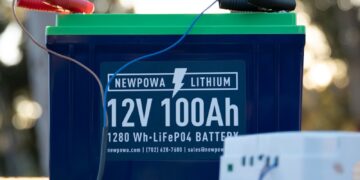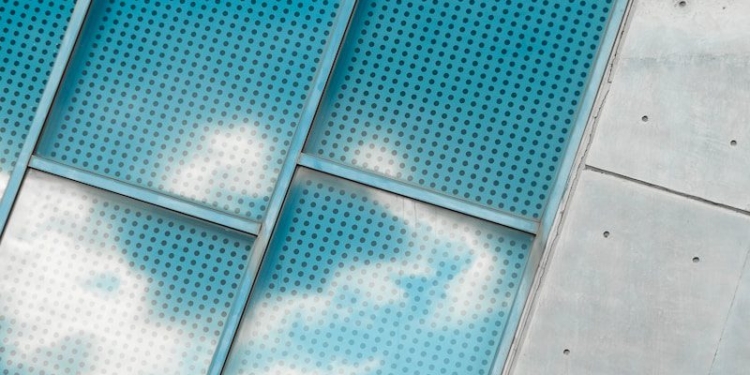— And What High-Energy U.S. Industries Should Be Doing Instead
By EcoBusinessNews
Introduction: Greenwashing in the Age of Climate Crisis
As global industries rush to slap the word “green” on everything — from hydrogen to steel — the public is beginning to ask a fair question: “Is this really clean, or is it just marketing?”
One major offender in the sustainability storytelling space? Green steel.
While European and Scandinavian producers have made legitimate progress using hydrogen-powered, fossil-free processes, many companies in the U.S. are still stuck using dirty, coal-fired electricity, even while marketing their product as sustainable.
The uncomfortable truth is that not all “green steel” is actually green — and high-energy users across the United States, especially in California, Texas, and the Rust Belt, need to look in the mirror.
In this article, we’ll uncover:
- Why “green steel” can be misleading
- How the U.S. manufacturing sector (including in CA) can actually go green
- How high-energy users can take advantage of federal tax credits (like the Investment Tax Credit [ITC]) and other incentives
- What companies like Pacifico Energy are doing to help energy-intensive industries shed dirty power
Chapter 1: What Is “Green Steel” — And Is It Really Clean?
Steel production is one of the top three most carbon-intensive industries globally. Traditional steelmaking relies on blast furnaces powered by coke (a coal product) and emits nearly two tons of CO₂ per ton of steel produced.
So-called “green steel” aims to decarbonize this process in several ways:
- Using electric arc furnaces (EAFs) instead of blast furnaces
- Powering those EAFs with renewable electricity instead of coal
- Substituting green hydrogen for coke as a reducing agent
But here’s the kicker:
⚠️ In the U.S., many steelmakers using EAFs are still powered by fossil-fueled grids, not solar, wind, or hydro. That means they’re trading one dirty input for another.
So while the production looks cleaner on paper, it may still be reliant on natural gas or coal-fired electricity, especially in states without strong clean energy mandates.
Chapter 2: Who’s to Blame? (And Who’s Getting It Right)
The Greenwashing Offenders
While no company wants to be publicly shamed, here are a few cautionary examples:
- California and Midwest steel companies using EAFs powered by carbon-heavy grids, then marketing their product as “sustainable”
- Recyclers claiming zero-emissions processes while buying brown power off the grid
- Construction and automotive sectors advertising low-carbon supply chains but lacking true clean energy sourcing
📍 California has some of the most progressive climate laws in the world — yet many industrial parks still rely on fossil power from the CAISO grid during peak production hours.
The Global Leaders Doing It Right
Let’s be fair: Some companies are walking the talk.
- SSAB (Sweden) – Uses hydrogen and hydropower to make fossil-free steel.
- H2 Green Steel (Sweden) – Integrated green hydrogen with a closed-loop energy system.
- thyssenkrupp (Germany) – Piloting hydrogen DRI + EAF systems powered by renewable sources.
But the U.S. industrial sector is lagging behind, both in clean power sourcing and in investment.
Chapter 3: The Real Culprit? Energy Sourcing.
Here’s where it gets real:
💡 Electric Arc Furnaces (EAFs) Are Only as Clean as the Power Behind Them
Most of the “greener” steelmaking methods still require huge amounts of electricity — and when that electricity comes from fossil sources, the emissions still exist — they’re just relocated from the furnace to the power plant.
Some EAFs consume over 400 kWh per ton of steel, which quickly adds up to gigawatt-hours of annual consumption.
California steel manufacturers — especially in the Central Valley, Inland Empire, and Los Angeles — are prime offenders, because many don’t source dedicated renewable energy or build onsite solar+battery systems.
Chapter 4: What Can U.S. Steelmakers (and Other High-Energy Users) Do?
✅ Step 1: Build or Source Dedicated Renewable Energy
Steelmakers, manufacturers, food processors, and other industrial giants must start investing in:
- Onsite solar + battery storage
- Offsite Power Purchase Agreements (PPAs) from solar and wind farms
- Virtual PPAs if land or roof space is limited
⚡ Companies like Pacifico Energy specialize in providing this clean power infrastructure with no upfront costs through Energy-as-a-Service (EaaS) models.
✅ Step 2: Take Advantage of Massive Federal Incentives
Thanks to the Inflation Reduction Act (IRA) and the revamped Investment Tax Credit (ITC), energy-intensive industries now have unprecedented access to clean energy funding.
🌞 Investment Tax Credit (ITC)
- 30% base credit for solar and battery systems
- Up to 70% credit with bonus incentives:
- Domestic content
- Energy communities
- Low-income siting
🏭 Section 45X and 48C Credits
- For domestic manufacturers of steel, inverters, batteries, etc.
- Offers per-unit production tax credits
- Can be used by direct owners or energy service partners
✅ Step 3: Work With a Clean Power Provider Like Pacifico Energy
Pacifico Energy 🔗 is helping steelmakers and industrial users:
- Offset grid power with 100% clean solar and battery systems
- Install onsite or adjacent renewable energy infrastructure
- Capture ITC and PTC tax credits without needing to own the system
- Improve ESG scores and meet Scope 2 emissions targets
They operate across:
- California – Including agricultural and manufacturing corridors
- Texas – For large-scale, grid-hungry clients
- Utah, Nevada, and Midwest states – Where land and sun are abundant
Pacifico owns and operates the system. You get clean energy, locked-in prices, and none of the hassle.
Chapter 5: The Future — If You’re Not Cleaning Your Power, You’re Not Green
🔌 The ESG Pressure Is Mounting
Public companies are now being forced to disclose carbon emissions via the SEC’s Scope 1/2/3 guidance. If you’re claiming to make “green steel” or “sustainable food packaging” or “net-zero logistics,” you better back it up with verifiable energy data.
🌱 Clean Energy Is a Financial No-Brainer
Between:
- Tax credits
- Lower operating costs
- Peak demand savings
- Long-term power purchase predictability
…it no longer makes sense not to go clean.
Conclusion: Don’t Be a Dirty Energy Hog
Steelmakers, manufacturers, and high-energy users can no longer get away with green marketing while running on fossil juice. That game is over.
You don’t need to be perfect — but you do need a plan:
- Clean power sourcing
- Energy storage integration
- Smart partnerships
- Tax credit alignment
And companies like Pacifico Energy are here to help.
✅ Stop pretending to be green.
✅ Start building real, resilient, clean energy systems.
✅ Don’t be a dirty energy hog — because your customers, investors, and regulators are watching.
Want to Learn More?
📎 Pacifico Energy — Solar & Storage for High-Energy Industries
📎 Department of Energy ITC Overview
📎 IRS Guide to IRA Credits
📎 Inflation Reduction Act — Full Text & Industry Impact



















